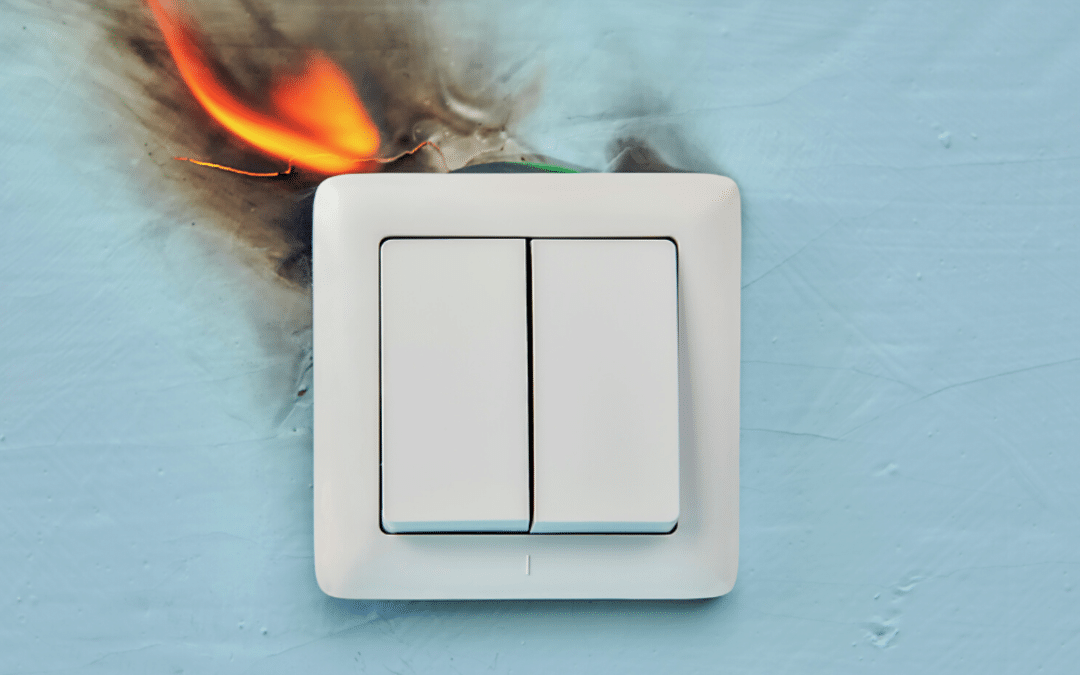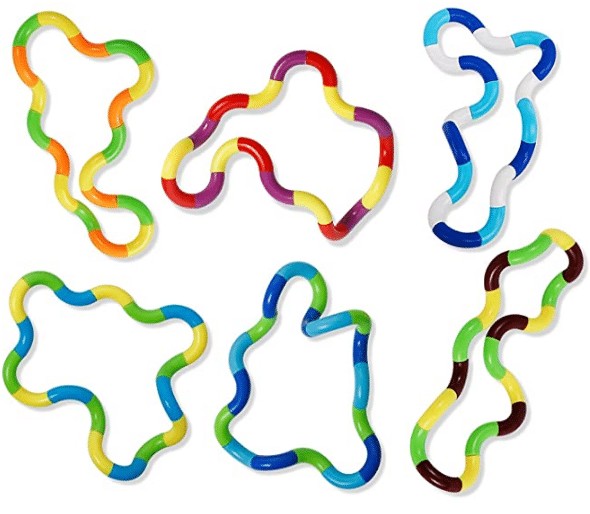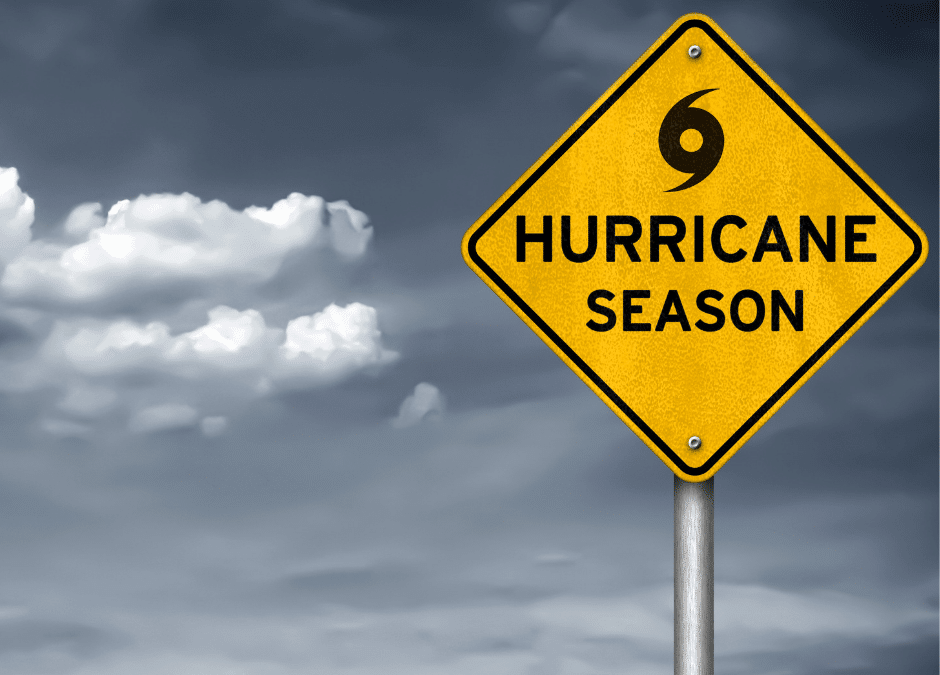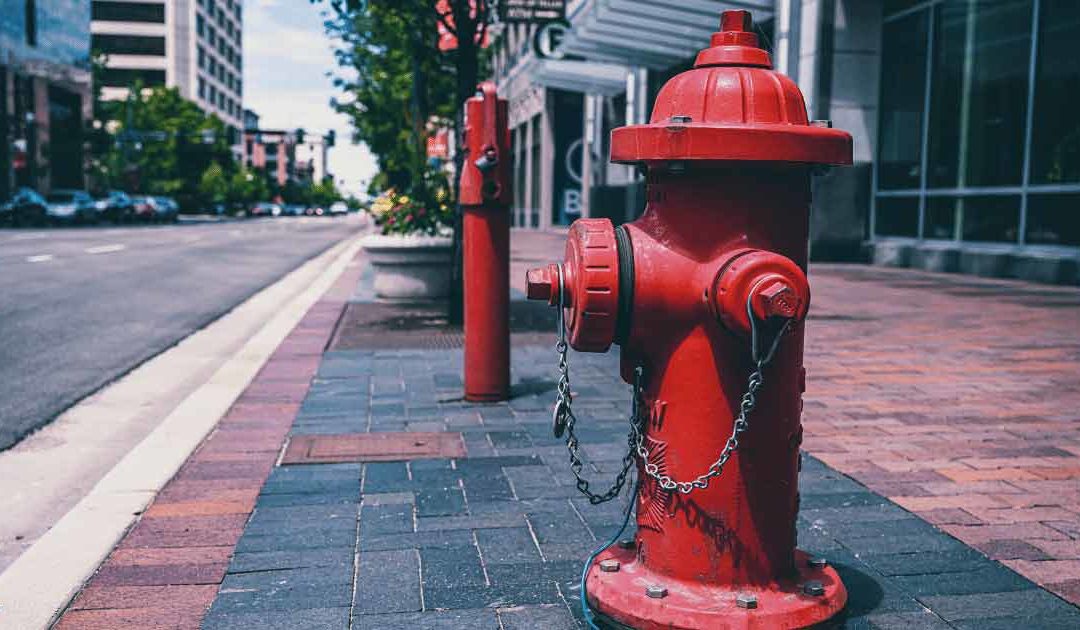
by California Casualty | Homeowners Insurance Info, Safety |
You’re used to seeing fire extinguishers in public buildings such as offices and schools in case of an emergency. But would you be prepared if a fire broke out at home? Almost 400,000 home fires happen every year in the U.S., causing thousands of deaths and millions of dollars in losses, but still,1 in 4 Americans say they don’t have a fire extinguisher in their home.
While you may not be able to predict a house fire, you can protect your family by being prepared. That includes owning fire extinguishers, knowing how to use them, checking your smoke alarms, and having a family disaster plan.
If you are one of the families that currently doesn’t own any fire extinguishers – we strongly recommend purchasing one as soon as you can. Don’t worry, there are other steps you can take to safely contain a small home fire. Here are some helpful home fire safety tips and guidance.
Know not all fires are the same.
Some fires are oil-based. Others are sparked by electricity or chemicals. Still, other fires are non-chemical. The way you put out a fire depends upon the type. It’s very important to know the kind of fire. In some cases, if you choose the wrong way to try to extinguish a fire, it could make it even worse.
Here’s how to put out a cooking fire.
Kitchens are common places for home fires. When you turn on your stove, you ignite a flame. If that flame combines with cooking grease, a fire can erupt. Fires also can easily start if you leave a stove unattended and the food or liquid in the pan or pot starts to burn.
Water will not work on kitchen fires- which are oil or grease-based. Upon contact with the oil, the water molecules quickly heat to steam and cause the oil to explode in all directions.
The best way to put out a cooking fire is to “snuff it out”. You want to cut the flow of air to the fire. Here are some options:
-
- If the fire is small enough, cover it with a metal cooking lid or cookie sheet. Keep it covered until it has cooled.
- Cover the fire with a fire blanket, a large piece of fire-resistant material such as fiberglass.
- Don’t swat at the flames. This could create airflow and make the fire worse, or ignite your clothes.
- Pour a large quantity of salt or baking soda over the fire. Make sure it is salt or baking soda and not flour. Flour adds fuel to the fire and will cause it to burn (or even explode).
- Turn off any heat source.
- If your fire is in the oven or microwave, keep the door shut. While it may look scary, the lack of air will eventually extinguish the fire.
Here’s how to put out a chemical fire.
Many common household items are chemical-based and highly flammable. This includes alcohol, rubbing alcohol, hand sanitizer, products in aerosol cans, nail polish and remover. Exposing any of these chemicals to an open flame is dangerous. Even doing your nails near a lit candle can spark a chemical fire.
Chemical fires are similar to cooking grease fires. You never want to use water to put out a chemical fire. It could cause the fire to spread.
Here’s how to handle a chemical fire:
-
- Cover the fire with a fire blanket.
- Pour a large quantity of baking soda or sand on the fire.
Here’s how to put out an electrical fire.
There are many possible causes of electrical fires. They can start due to overloaded circuits, faulty electrical outlets, and outdated appliances. Worn or frayed cords can cause heat to reach flammable surfaces in your home such as curtains and rugs. Installing a light bulb with a wattage that is too hot for the fixture can ignite fires. Electric space heaters also are known for starting fires when their coils are placed too close to couches, curtains, bedding, and rugs.
Never use water to put out an electrical fire. Water conducts electricity, and if you douse an electrical fire with water, you could be electrocuted.
Here’s some guidance on how to put out an electrical fire.
-
- If it is safe to do so, unplug the device causing the fire.
- Turn off the electricity on the house’s breaker box.
- Smother the flames by pouring baking soda onto them.
Here’s how to put out ordinary fires.
Ordinary fires involve paper, wood, clothing, trash, or plastic. This type of fire may occur if you knock over a candle or get a spark from the fireplace.
Unlike the other fires, these do respond well to water.
-
- Grab a bucket and fill it with water. Douse the flames.
- If you’re dealing with a wood-burning fireplace, you may wish to skip the water. That will create a mess and spread ashes throughout the room. Consider spreading out the logs and embers, and covering them with sand or baking soda.
Don’t try to put out a large fire by yourself.
If the fire becomes larger or out of control, you do not want to try to contain it. Your safety comes first. Get out of the house and call 9-1-1.
A fire extinguisher is a good investment for your home.
Finally, if your home does not have a fire extinguisher, you should invest in one. Fire extinguishers use either water, foam, dry powder, CO2, and wet chemicals to extinguish fires. Some use a combination. The basic classifications for home use include:
-
- Class A – This type is used on any fire that may be extinguished with water.
- Class B – This type is used for flammable liquids and grease fires.
- Class C – This type is used for fires involving electrical equipment.
Review your coverage with your homeowner’s insurance to know how you are covered in the event of a fire.
To help prevent fires in your home, see our blog on home fire safety tips.
This article is furnished by California Casualty, providing auto and home insurance to educators, law enforcement officers, firefighters, and nurses. Get a quote at 1.866.704.8614 or www.calcas.com.

by California Casualty | Educators |
You’ve heard the craze, but have you jumped on the fidget tool or desk pet teaching trend?
Fidget toys and desk pets might just sound like the latest fad in education, but they are both actually easy-to-use tools that educators can implement to support attentiveness and positive classroom behavior.
And it’s time to get on board.

Learning to Focus with Fidget Tools
Fidgeting is our body’s way of naturally releasing energy (and we know children have a ton of energy). Most teachers see fidgeting in students when they are continuously getting up to use the restroom or sharpening their pencils, rustling around in their seats, always talking to classmates, doodling during lessons, etc. Many teachers and parents are hesitant that these toys or tools will take their student’s focus off of the task at hand and become a distraction, but that’s often not the case.
Fidget toys or sensory tools are self-regulation objects to help with focus, attention, calming, and active listening. Using intentional fidgeting in the classroom has shown enhanced academic achievement in children with ADHD, anxiety, and other sensory processing differences. That is because the movement of fidget tools, “…causes instant grounding effects by taking the user out of their head and refocuses them back to the present moment” says Licensed Family Therapist Elizabeth Hankin, M.A., LMFT.
How You Can Implement Fidget Tools
It’s important to introduce fidget tools in a structured way so they don’t end up becoming a toy or unnecessary distraction. Follow these steps to easily implement fidget and sensory tools in your classroom.
-
- Start by introducing your students to the sensory systems
- Explain or experiment how each work and can improve focus & calm their mind
- Have them choose their own unique sensory preferences
- Purchase or make sensory tools that will work for your students
And the last and most important step…
-
- Set rules and expectations for the fidget tools
This step is vital to drawing the line between a sensory object and a toy. Set a list of ground rules for your class when it comes time to get the sensory objects out. Make sure to emphasize that they are not to be used as a toy.
You could even have time limits as to when they can be used. For example, some teachers choose to keep sensory objects out throughout the day, while others choose to let their students pick when they would like to have the sensory object with them. To do this you’ll need to help students learn to understand when they might need the device- like to sit through a group reading or to focus during a test. After you introduce the sensory objects and state their purpose, practice completing tasks with (and without) the fidget tools and see what works best for your students.

Quick List of Fidget Tools
Remember the goal of fidget tools is to help focus attention and improve learning ability. When you purchase a device it should be a good sensory object; something that has some weight, movement, or texture. Here is an easy list of classroom-friendly sensory objects.
Stress Balls
Pop Bubbles
Bouncy Bands
Fidget Spinners
Infinity Cube
Tangle Toys
Kneadable Erasers
Illusion Balls
Expandable Breathing Ball
Monkey Noodle

Encouraging Positive Behavior with Desk Pets
Now let’s talk about the other teaching trend that has taken the internet by storm- desk pets. You’ve probably seen the idea all over Teacher TikTok and Instagram, but these little erasers are more than just a cute desk accessory for your students, they are great for positive reinforcement in the classroom!
So what exactly are desk pets? Desk pets are miniature erasers in the shape of animals that students ‘adopt’, keep on their desk (or station), and get to ‘take care of’ throughout the year by building the pets ‘habitat’. The erasers come in different varieties- sea animals, pets, zoo animals, etc. and can be found at stores like Target, Dollar Tree, and Amazon.
Educators across the nation are using these pets as rewards for positive behavior. When students are acting accordingly or do a good deed they will be awarded ‘money’ or a ‘token’ to help purchase their own desk pet. The positive reinforcement doesn’t stop there. They can continue to earn ‘tokens’ to build a habitat and take care of their pet with food, friends, housing, accessories, etc.
How You Can Introduce Desk Toys
Every educator does desk pets differently, so don’t be afraid to make them your own and adapt them to your class. But like, fidget toys it’s important to bring desk pets on as an incentive for your class in a strategic way to make sure they do not become a toy or distraction. Here’s what you can do to introduce them into your classroom.
- Set up a reward process where students can earn ‘money’ or ‘tokens’ for positive behavior, following rules, kind words, etc.
- Create an ‘adoption center’ full of desk pets that are ready to be purchased. You can even make a ‘pet store’ that houses accessories (also in the form of erasers) for their desk pets that they can purchase.
- Set aside time at the end of the day or week where students can cash in and adopt pets or purchase accessories.
- Find a place where your students will house their pets. Will they keep them on their desks? On a side table? In a shoebox ‘community’ that you build in the corner of your room. You decide.
And lastly, just like with fidget tools…
- Set rules and expectations
The time to establish guidelines is before your students even receive their desk pet. How you want to set rules is up to you, but many educators find that putting desk pet rules in their ‘adoption contract’ that they will sign and give back to ‘adopt’ their pet is helpful. And in the event that the student is using the desk pet as a toy it can be taken away- per the signed agreement.

Desk Pets for Your Classroom
Incorporating desk pets may feel a bit overwhelming, but don’t worry once you get started and into a routine, it’s easy and just as rewarding. The most important thing to remember is you can make your classes’ desk adventure whatever you would like it to be- big or small. Don’t feel pressured to do everything every other educator is doing on social media with their desk pets, find what works best with your class, and roll with it!
Now it’s time to start building your own desk pet collection. Click here for some easy and cheap desk pets and accessories to get your class store started.
This article is furnished by California Casualty, providing auto and home insurance to educators, law enforcement officers, firefighters, and nurses. California Casualty does not own any images in this post, they have all been linked to their owners. Get a quote at 1.866.704.8614 or www.calcas.com.

by California Casualty | Nurses |
If a natural disaster strikes your community, what will you do?
As a nurse, your first instinct is to help. Whether you work at a school, a hospital, or clinic setting, your skillset is uniquely valued during an emergency. Here’s how you can help your patients cope after a natural disaster.
What types of natural disasters can you expect in your area?
Different parts of the U.S. are more prone to certain disasters than others, according to Popular Science. You’re more likely to experience wildfires in the western states and snowstorms in the Midwest and northeastern U.S. Tornadoes are common in south-central states while hurricanes often strike along the eastern seaboard. There are earthquakes in the west, and flooding happens pretty much everywhere. Not only do these disasters result in property damage, but they can also cause severe injury and even loss of life. Your nursing skills are much needed to minimize pain and suffering.
Why do nurses play key roles in a disaster?
As a nurse, you are a trusted professional. People look to you for guidance. You not only bring expertise in the medical field, you know how to coordinate care while helping to comfort patients, relieving some of their stress and fear.
In addition, disaster preparedness was likely part of your nursing training. If it wasn’t, or if you need a refresher, consider a disaster certification from the American Nurses Credentialing Center.
What are ways that nurses can help in a disaster?
Nurses play pivotal roles in a disaster, delivering onsite care to the injured. Often working amid chaos and with limited resources, nurses triage patients and administer medical care. If more serious care is needed, nurses help coordinate transport to the nearest hospital. Victims of disaster may experience post-traumatic shock syndrome, and nurses also monitor patients’ mental health and guide them to resources. In addition, nurses help displaced people find temporary shelter and food and get access to prescriptions as needed.
Helping in a disaster is not for everyone. There are potential safety and security threats. There are primitive conditions. There can be a significant time commitment away from your home and family. If you are able to clear your schedule to volunteer, consider the other attributes that will help make you successful in a disaster setting: (1) Your clinical expertise covers a wide range of medical conditions. (2) You are comfortable working in high-stress situations and can work through emotions. (3) You are able to work in rough conditions, perhaps without access to electricity, water and basic supplies. If you have the skills, the time, and the desire, disaster nursing could be right for you.
What is a school nurse’s special role following a disaster?
In addition to helping onsite following a disaster, we can’t forget about school nurses and the roles they play. They deal with the mental and physical effects among students, parents, teachers and staff. For families made homeless by the disaster, or those who need mental health services, a school nurse provides important connections to community resources. Similarly, she connects staff with district resources for mental and physical health.
How can you help your community prepare for a disaster?
You don’t necessarily have to volunteer in a disaster to help your community. You can be there to help prepare for a disaster in advance by assisting hospitals, schools, and towns in the creation of a comprehensive disaster plan.
Nurses can help with community education, leading disaster preparedness clinics, and giving people the knowledge to create their own disaster plans to make it safely through a disaster.
You can utilize resources from trusted organizations in developing the right program for your school, hospital, organization, and community. Consider these resources:
How can you volunteer to help in future disasters?
If you are interested in volunteering your time, make sure you have up-to-date vaccinations for traveling, and be prepared to leave immediately. The following organizations welcome disaster-related nurse volunteers:
This article is furnished by California Casualty, providing auto and home insurance to educators, law enforcement officers, firefighters, and nurses. Get a quote at 1.866.704.8614 or www.calcas.com.

by California Casualty | Homeowners Insurance Info, Safety |
Hurricanes are natural disasters that bring demolishing winds and massive amounts of rainfall to land from the ocean. Coastal towns and cities across the world have been torn apart by hurricanes, but they aren’t the only ones who are usually affected. Hurricanes can cause significant damage to towns over 100 miles inland! September, is the most active month of the year, so now is the time to protect yourself and your family from these deadly natural disasters.
The relative lack of storms so far this hurricane season is bringing both good and bad news. While we are all taking a sigh of relief that there has yet to be a major storm, it could also be bringing a false sense of security. Many people in states where hurricanes usually hit may be “dropping their guard.” A new survey finds only a quarter of those living in hurricane-prone states think they are prepared if a monster storm hits, and nearly half of the respondents say they have yet to make any preparations this year.
Remember all hurricanes, no matter what size, have the potential to cause significant damage and life-threatening situations. Looking back at the destruction previous hurricanes like Harvey, Sandy, and Katrina have caused, it is essential that you make sure your family, home, and belongings are completely protected.
Important Hurricane Coverages:
- Flood Insurance. A regular home insurance policy will not pay for damages caused by flooding, but when you add flood insurance to your policy it will cover all damages that happen to your property, even if you rent! Be aware that when you add flood insurance there is a 30-day waiting period until it goes into effect, so that means it is often too late to purchase it when a hurricane or tropical storm is approaching.
- Scheduled Personal Property Insurance (Floater). Many people find that after a natural disaster their insurance coverage is limited on expensive personal items (ex. jewelry, furniture, technology, firearms, collectibles, furs, instruments, etc.). Floaters protect your personal items for their full value.
Steps to Protect Your Home & Family
- Heed evacuation notices and keep your car’s gas tank full in case of evacuations
- Stock up on essentials like bottled water, non-perishable food items, toilet paper, and pet food
- Make sure pets are kept inside, safe, and have a spot to do their “business”
- Have a family evacuation and communication plan
- Prepare an emergency kit (ex. flashlight, medicines, cash, and important documents)
- Get a NOAA Weather Radio
- Sign up for National Weather Service storm texts at https://www.weather.gov/subscribe-hurricaneinfo
- Charge cell phones and other devices and have charged spare batteries
- Install storm shutters or purchase 5/8 exterior grade or marine plywood to cover windows or doors
- Add straps or additional clips to roofs to reduce damage
- Bring in or secure anything that can be propelled by wind (ex. grills, bicycles, lawn furniture, play equipment, etc.)
- Know how to turn off propane tanks and gas lines
After a Hurricane Strikes
- Make sure you, your family, and pets are safe and secure
- Register yourself as “safe” on the Safe and Well website
- Follow all city boil and curfew orders
- Secure the property from further damage or theft
- Contact your insurance company as soon as possible
- Keep or document receipts and other expenses if you are evacuated or forced to find another place to live because of damage to your home or apartment
- Be wary of unscrupulous contractors following a natural disaster
It’s important to know that flooding and storm surge are the biggest threats to life when hurricanes hit. Leave low-lying areas, never drive or cross through running water, and avoid rivers, streams, and creeks; which could flash-flood.
For more information visit:
https://www.ready.gov/hurricanes
https://mycalcas.com/?s=hurricane
https://www.iii.org/article/preparing-hurricane
https://www.cdc.gov/features/hurricanepreparedness/index.html
https://www.redcross.org/get-help/how-to-prepare-for-emergencies/types-of-emergencies/hurricane.html
This article is furnished by California Casualty, providing auto and home insurance to educators, law enforcement officers, firefighters and nurses. Get a quote at 1.866.704.8614 or www.calcas.com.

by California Casualty | Firefighters |
It’s tempting to pull in front of a fire hydrant or park in a fire lane—especially if it’s just for a minute. But your quick decision could be the difference between life and death for someone who needs emergency assistance.
We’ve all been taught not to park in front of fire hydrants, but did you know your vehicle, by law, should be parked at least 15 feet away to allow access for fire engines to park and safely connect to the hydrant? The same concept applies to fire lanes, which are established areas where fire engines can gain quick access to buildings. But these lanes have an even larger safety-distance of 20 feet. So, even if it’s just a short stop- think again.
When you block a fire hydrant or park in a fire lane you…
…deny first responders access to buildings during emergencies.
In an emergency, every second counts. Generally, fire lanes are in busy urban areas with lots of traffic. Chances are there’s not a parking spot, and certainly not an area large enough for a fire engine, ambulance, and police cars. Yet these essential first responders need to get close enough to take action. The fire lane allows them to do that. Fire lanes are clearly marked, usually with curbs painted yellow or red and signs that read “No Parking or Standing Fire Lane.”
… make it difficult to access water during a fire.
The early firefighters used bucket brigades to put out fires. These dedicated individuals would line up and pass a bucket of water from person to person until they were successfully able to stop the fire. Fire hydrants were an engineering marvel, first appearing in the early 1800s. Today, they are essential sources of water during emergencies.
…. are ignoring their important purpose.
Maybe you just have something to drop off or pick up or you have a task that will only take a few minutes. You’ve been in places where you can’t park but you can load and unload. Fire lanes and the space near fire hydrants are not loading and unloading zones. You may make the argument that you’re not technically parked if someone is sitting in the car, right? You may even have your hazard lights on, signaling that this is temporary. But having your vehicle in the lane or in front of a hydrant is not allowed. That’s true even if someone is in the car and your vehicle is running. If you’re caught in these places, you could be subject to a ticket, fines, and more.
… are breaking the law.
Laws vary from state to state, but in all cases, there are repercussions for parking in front of a fire hydrant or in a fire lane. In many places, you are subject not only to fines but immediate towing. Don’t chance it.
… are preventing someone from getting the emergency assistance they need.
The most important reason of all is the reason why these laws about fire lanes and hydrants were established. Any delay in getting to a fire or helping victims could cost lives. It’s a similar reason to why you move over for emergency vehicles. You want to make sure that first responders have a clear path to their destination so they can help as many people as possible.
Drive safe and be sure to keep your distance when parking next to fire lanes and fire hydrants.
For more safety tips click here.
This article is furnished by California Casualty, providing auto and home insurance to educators, law enforcement officers, firefighters, and nurses. Get a quote at 1.866.704.8614 or www.calcas.com.









